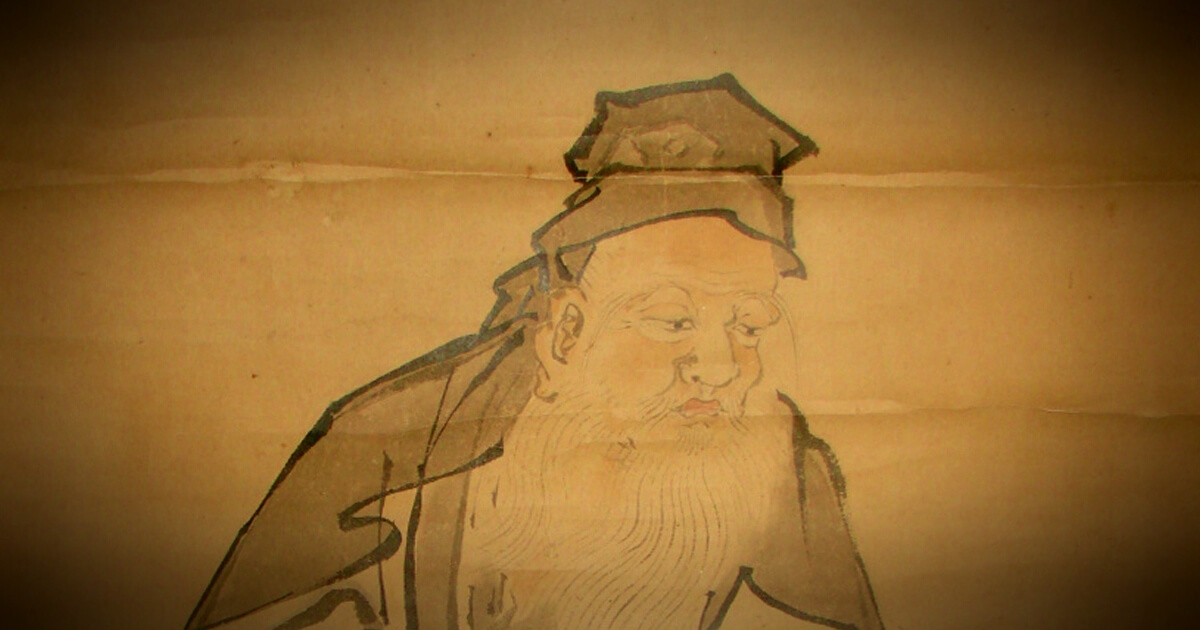Lesson
News / Blog
Other Menus
The Timing to Remount

Dirt / Stains
Dirt or stains may occur in a “kakejiku” (hanging scroll) due to various problems with how it was stored.
Dirt or stains will get worse if you ignore them, and then a precious work will be spoiled.
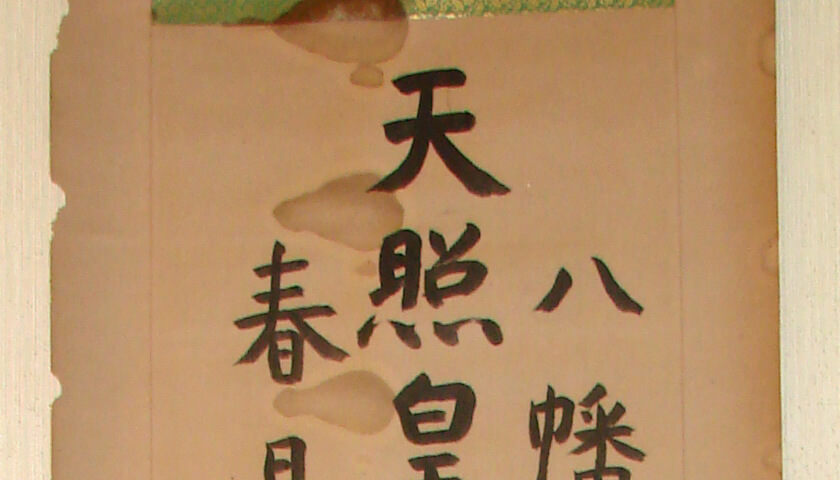
There are the stains on this kakejiku due to rain leakage.
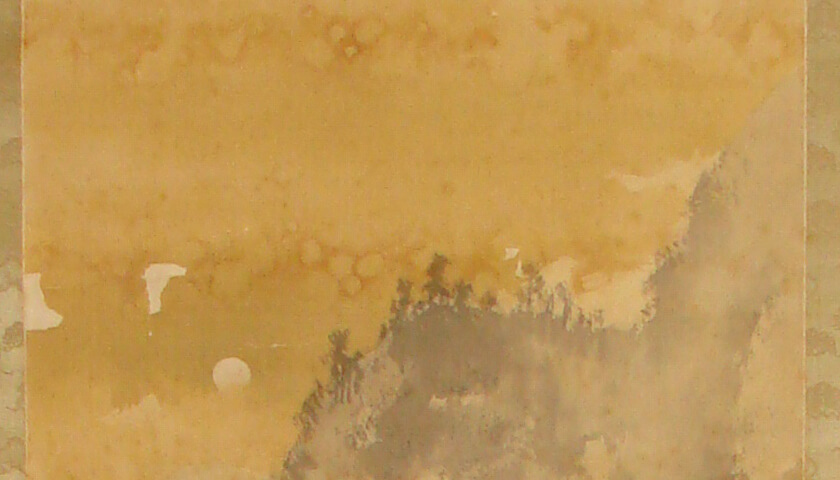
The stains spread all over this kakejiku.
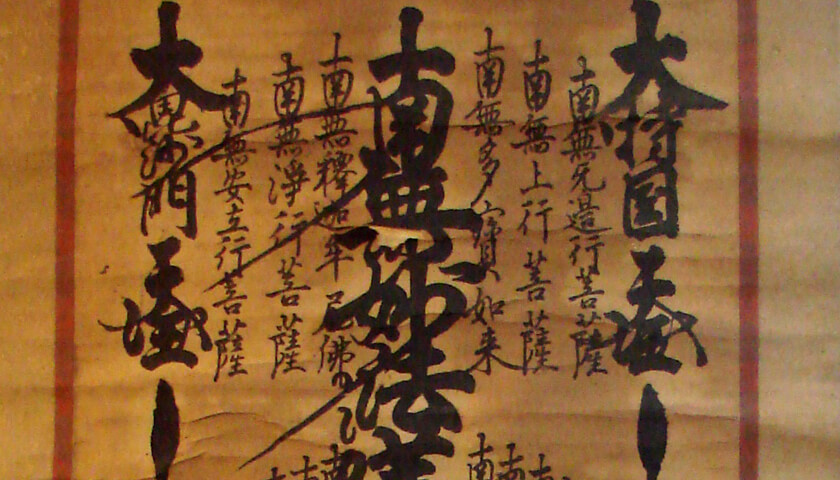
There is dirt with soot and stains on this kakejiku.
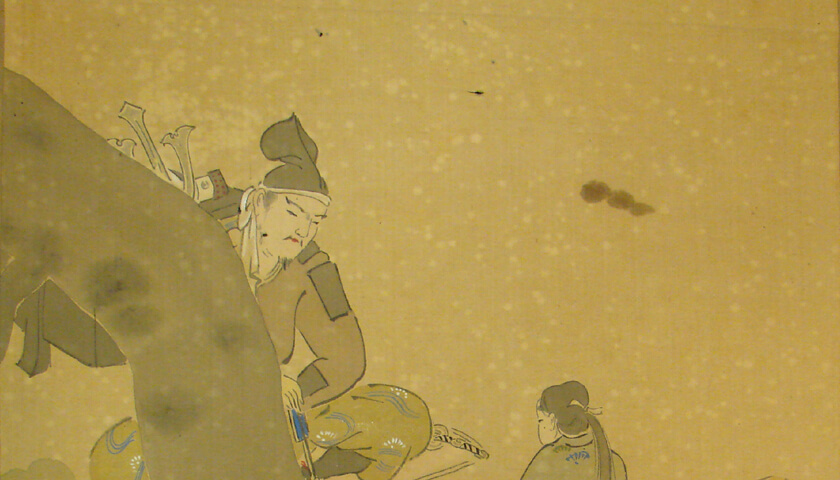
The stains spread all over this kakejiku.
Crease
Creases result from repeated rolling and unrolling of a kakejiku.
They are the cause of friction in the fabric or the main work as well as exfoliation of the pigments.
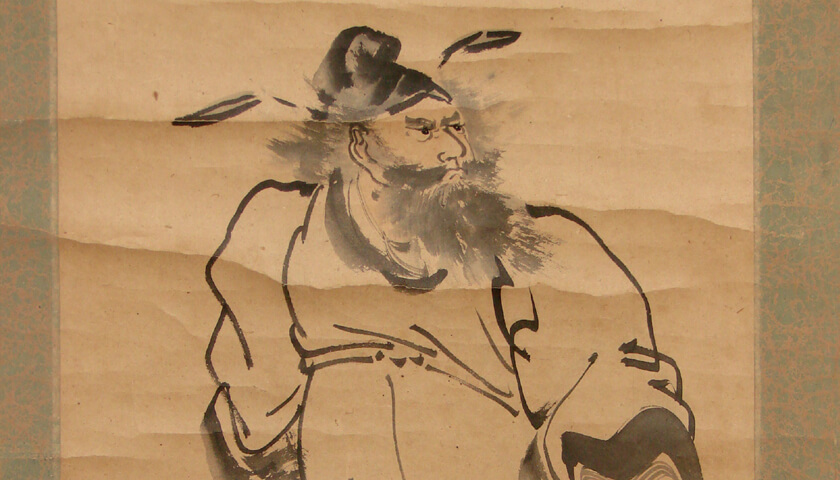
There are creases everywhere on this kakejiku due to heavy use.
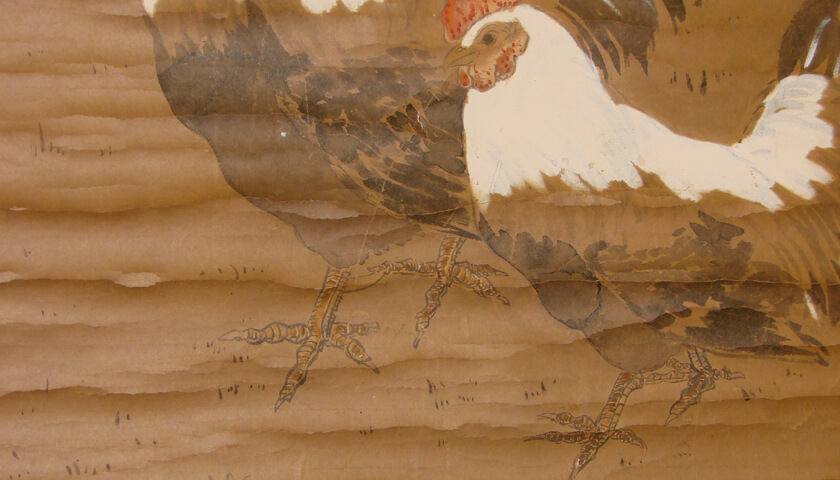
This work is severely damaged. There are innumerable creases on the work. This condition indicates that the work is in danger of breaking.
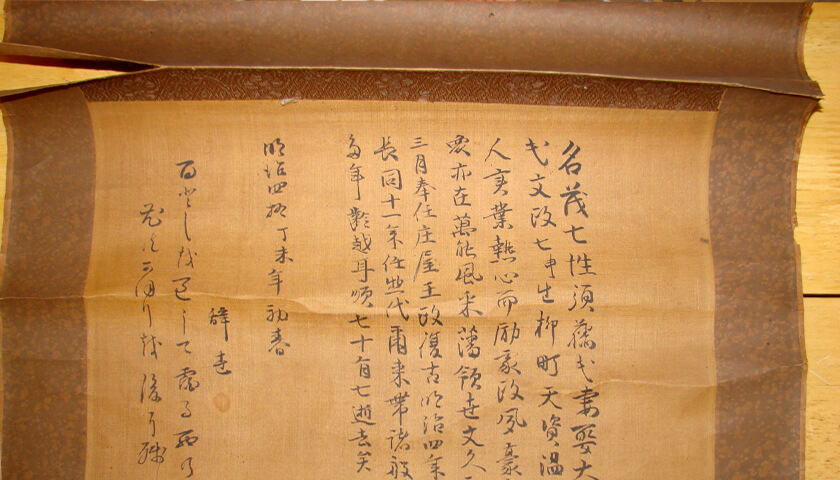
The mounting fabric has begun to tear, but the work has not been damaged yet fortunately.
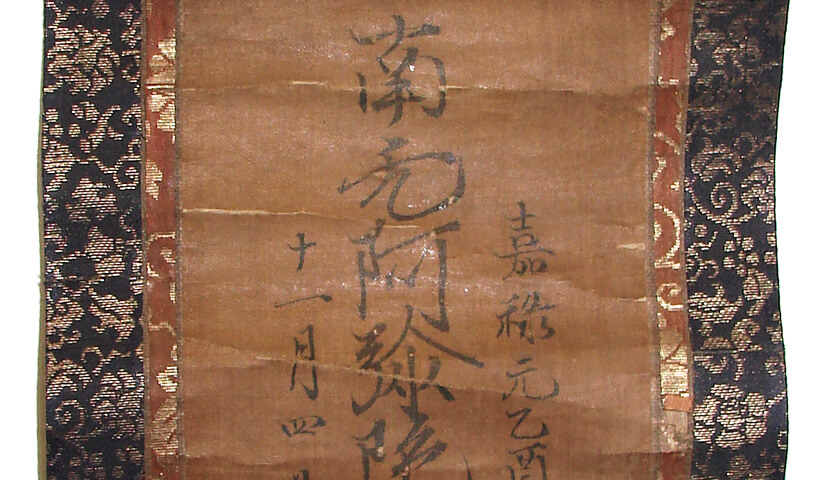
This work has begun to tear. In this condition, it is very fragile.
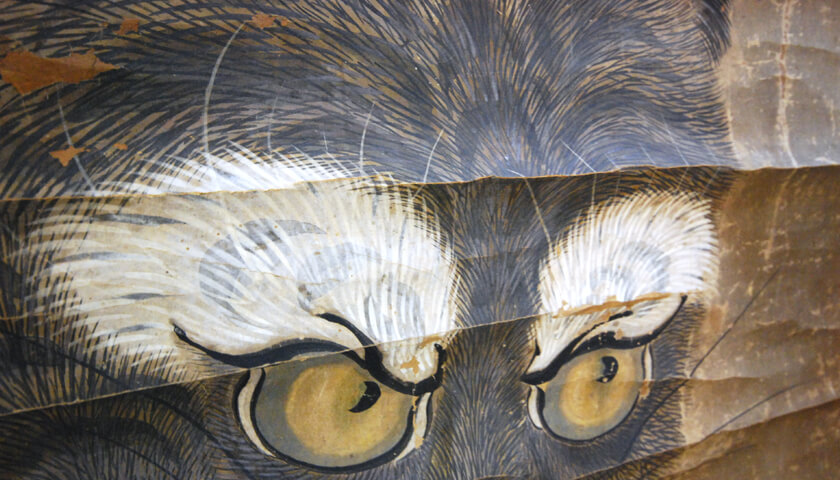
This work has begun to tear. In this condition, it is very fragile.
Reference
Holes made by worms
Worms may eat through a kakejiku due it being kept in a bad storage environment. We can replace the mounting fabrics of the kakejiku, but it may be very difficult to repair the main work.
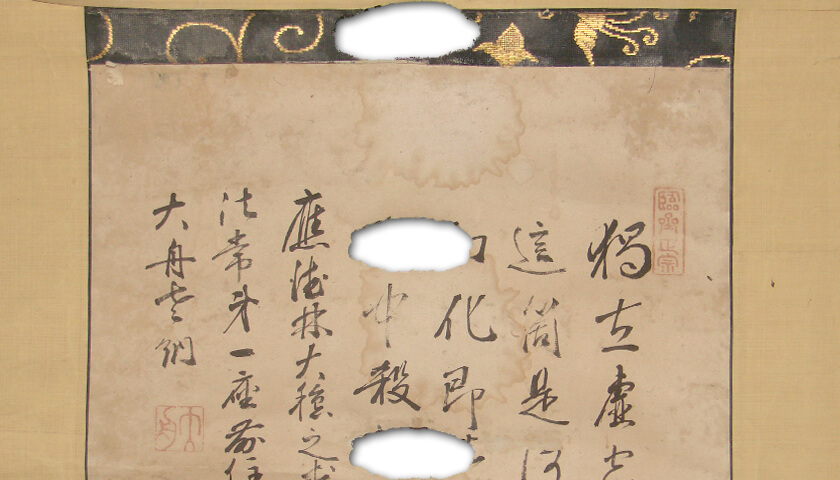
There are many holes in this work.
We can’t display the kakejiku like this, so repair is necessary.
However, we can not repair the calligraphy completely.
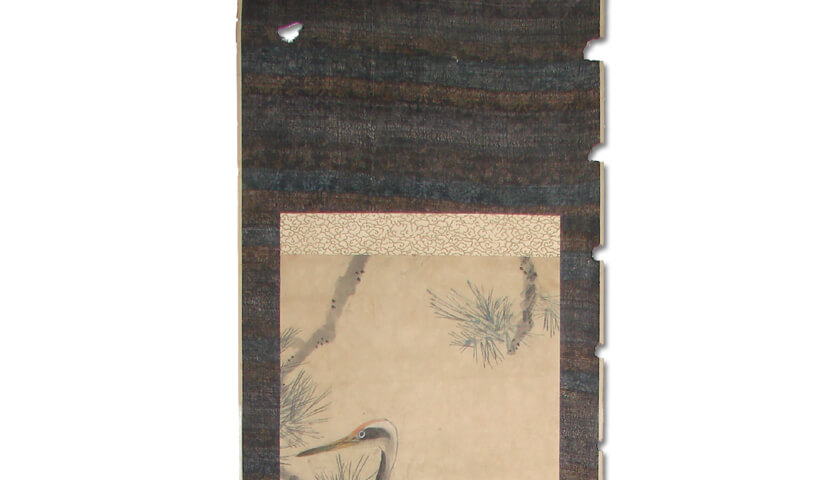
There are some holes in the mounting fabric, but the main work has not been damaged yet, fortunately.
Tears / Holes / Breakage
Severe damage may cause tears, holes, or breakage. They need repair.
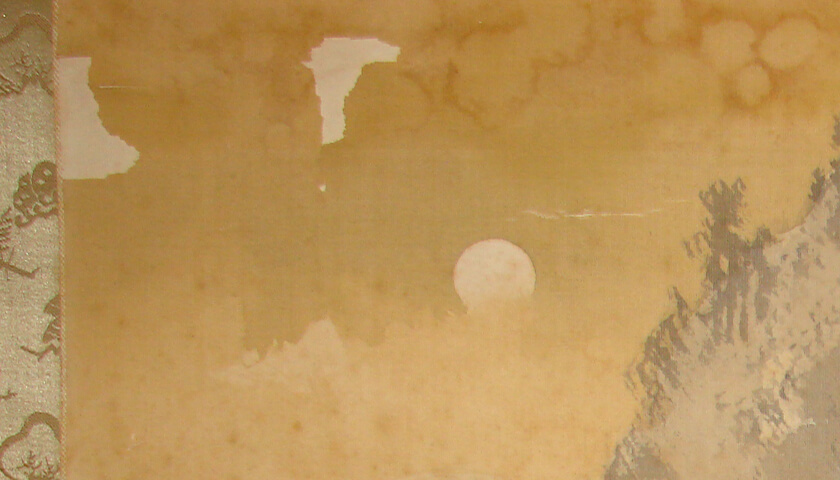
There are two holes on this work. Repair is necessary.
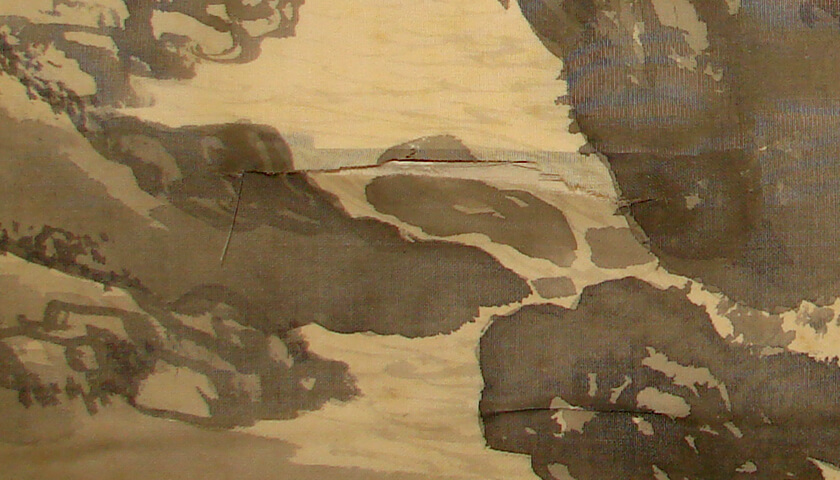
There is a tear on this work. We must reconnect the tear in remounting.
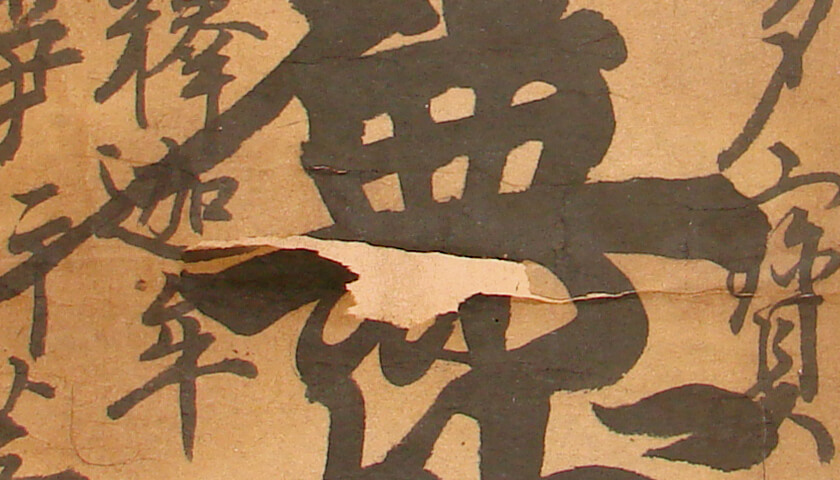
There is some breakage on this work. It is necessary to rewrite the lost part of the letter.

There is a tear on this work. We must reconnect the tear in remounting.
Separation
The lining paper has become partially separated from the main work when adhesion of the paste weakens.
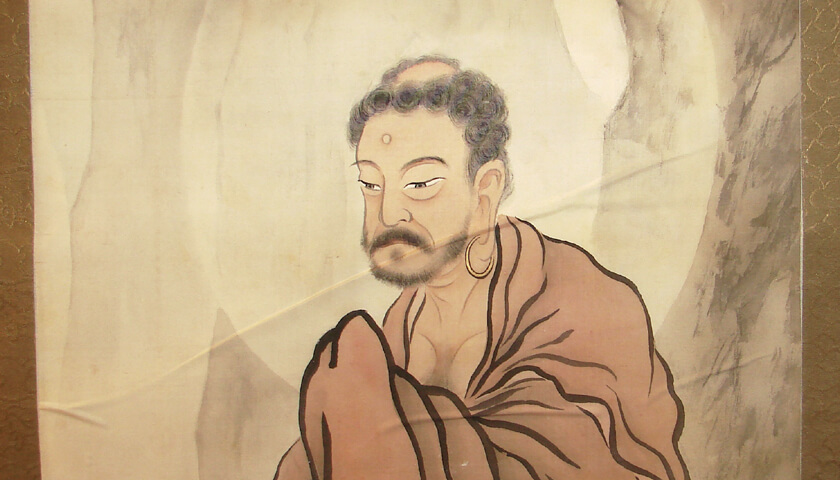
There is separation in this work. Remounting is necessary.
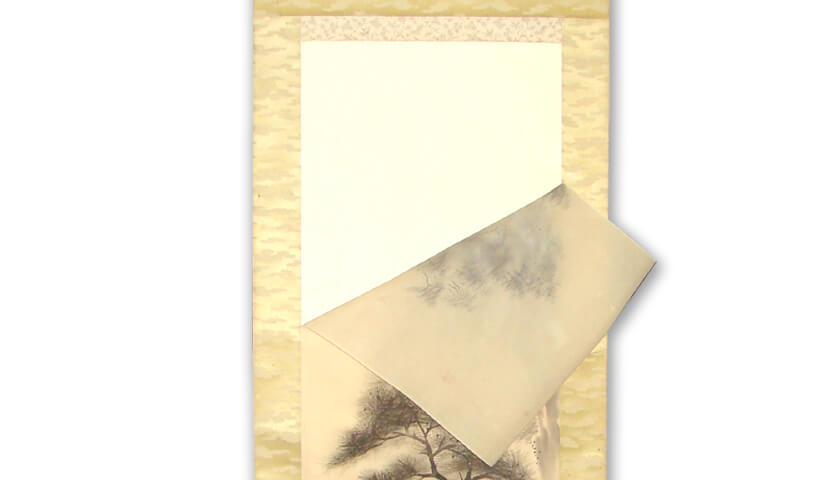
There is severe separation in this work. Immediate remounting is necessary.
Reference
Contents Link
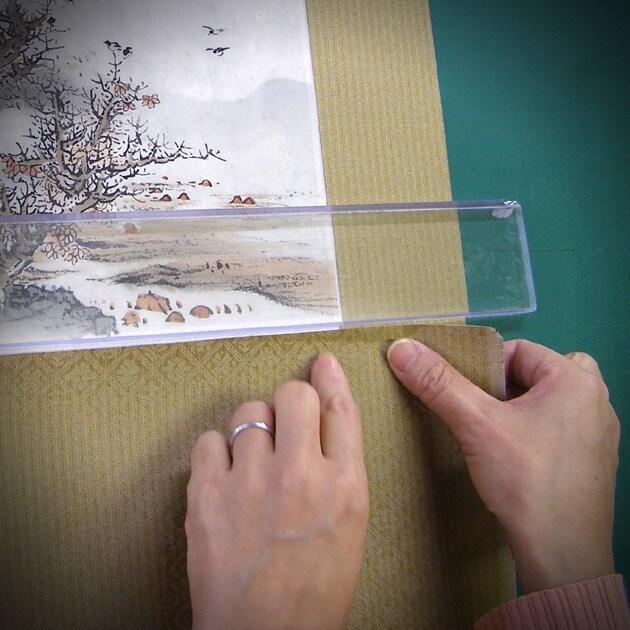 Inquiry Form for Mounting / Remounting Inquiry Form for Mounting / Remounting |

